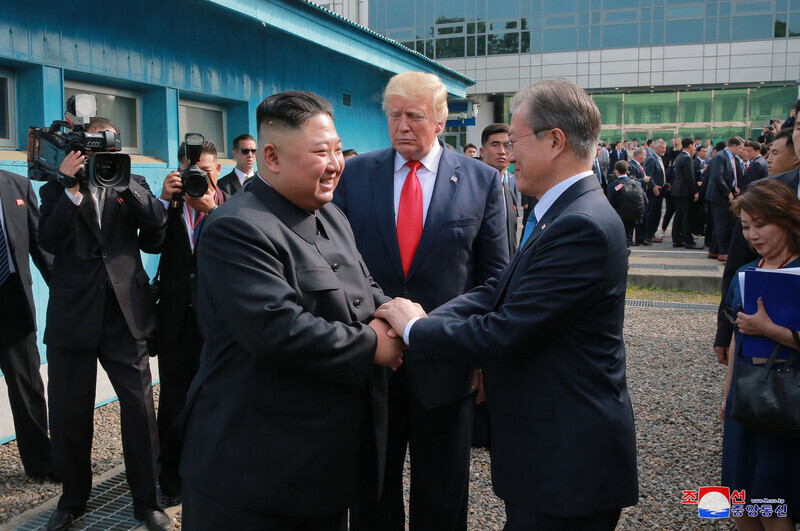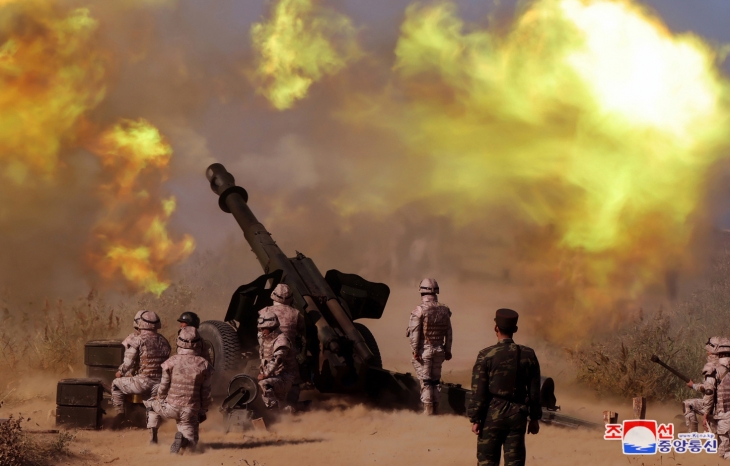The Korean Peninsula has long been one of the world’s most volatile regions, with tensions running high between North and South Korea for over 70 years. With North Korea’s increasing nuclear threats and unpredictable leadership, the question on everyone’s mind is: could North Korea really invade South Korea? If so, what would be the chances of success, and what would the devastating aftermath look like for South Korea? In this post, we’ll dive into the historical roots of the conflict, potential war scenarios, and their disastrous consequences for South Korea’s economy and society.
The Korean War: How It All Began

The roots of the current North-South divide date back to the Korean War, which began on June 25, 1950, when North Korean forces crossed the 38th parallel, aiming to reunify the Korean Peninsula under communist rule. The North’s surprise invasion overwhelmed the South, capturing Seoul within days. However, the war soon escalated into a global conflict when the United States, under the United Nations banner, intervened to support South Korea, while China and the Soviet Union backed the North.
The war raged on for three years, with millions of casualties and devastating destruction across the peninsula. In 1953, an armistice was signed, halting the fighting but leaving the two Koreas technically still at war. The Demilitarized Zone (DMZ) was established as the new border, but the tensions between the two Koreas have never fully dissipated.
Key Events Leading to the Present Day

Since the Korean War, the two nations have remained in a state of fragile peace, punctuated by numerous provocations, failed peace talks, and North Korea’s relentless pursuit of nuclear weapons. Key developments include:
-
The 1953 Armistice: Although the fighting stopped, both Koreas remained locked in a state of tension with multiple border skirmishes and military provocations.
-
Sunshine Policy (1998-2008): South Korea’s attempt to soften relations with North Korea through diplomacy and economic engagement led to several inter-Korean summits. Despite this, North Korea’s nuclear ambitions continued, eventually derailing the policy.
-
Nuclear Tests and Missile Development (2000s-Present): North Korea has conducted numerous nuclear tests and developed intercontinental ballistic missiles (ICBMs) capable of reaching the U.S. Despite international sanctions and efforts to denuclearize the Peninsula, the regime has refused to halt its nuclear program.
-
Recent Summits and Breakdowns (2018): High-profile summits between North Korean leader Kim Jong-un, South Korean President Moon Jae-in, and U.S. President Donald Trump sparked hope for denuclearization. However, the talks ultimately failed to produce lasting results, and tensions resumed.
-
North Korea’s Geopolitical Shifts (2023-2024): Recent developments, including North Korea’s closer ties with Russia and China, have only increased the uncertainty. North Korea has now officially designated South Korea as its primary enemy, while continuing to bolster its nuclear arsenal.
Potential Scenarios of Conflict: Could North Korea Really Invade?

The real question is, what are the chances of North Korea launching an invasion of South Korea? Here are four possible scenarios that illustrate the range of risks and their likely outcomes.
Scenario 1: Conventional Military Invasion
North Korea might attempt a large-scale ground invasion, similar to what occurred in 1950. This would involve massive numbers of troops and artillery pouring across the DMZ.
-
Chances of Success: Low (10-20%). While North Korea has a large standing army, South Korea’s military is far more advanced, with modern weapons, superior logistics, and strong U.S. support. Any conventional attack would likely be repelled swiftly.
-
Consequences for South Korea: Even a failed invasion would lead to heavy casualties, especially in the Seoul metropolitan area, which is within artillery range. The economy would take a significant hit, especially in the short term, as key infrastructure could be destroyed, leading to a sharp recession and increased unemployment. Socially, South Korea would face widespread trauma, fear, and possibly a surge in nationalism.
Scenario 2: Limited Nuclear Strike
North Korea might escalate its threats by launching a tactical nuclear strike on military targets or key infrastructure in South Korea.
-
Chances of Success: Moderate (30-40%). While North Korea’s nuclear capabilities are real, its ability to deliver these weapons accurately and effectively remains in question. However, even a single nuclear strike would have catastrophic consequences.
-
Consequences for South Korea: A nuclear strike could cripple South Korea’s economy, particularly if it targets industrial or financial hubs. The psychological impact on the population would be severe, with millions of people possibly displaced. The cleanup and rebuilding costs would be astronomical, running into hundreds of billions of dollars. The country could face an economic depression, and socially, the nation could struggle with long-term trauma and fear of future attacks.
Scenario 3: Nuclear Standoff and Diplomatic Breakdown
In this scenario, North Korea might not attack immediately but continue nuclear tests and aggressive rhetoric, causing diplomatic talks to fail.
-
Chances of Success: Low (5-10%). North Korea’s nuclear threats are likely a strategic play to gain leverage, but without significant international response, they risk being isolated further. However, a misstep could lead to conflict.
-
Consequences for South Korea: The ongoing threat of war would have a chilling effect on the economy, causing stock market fluctuations and possibly slowing foreign investment. However, without actual conflict, the long-term economic damage would be limited. Socially, South Koreans may experience anxiety, leading to increased militarization and preparedness.
Scenario 4: Hybrid Warfare and Cyber Attacks
North Korea could engage in hybrid warfare, using cyberattacks to disrupt South Korea’s economy, infrastructure, or military.
-
Chances of Success: Moderate (40-50%). North Korea has demonstrated significant cyber capabilities, and a well-coordinated cyberattack could cause chaos in South Korea’s highly digital economy.
-
Consequences for South Korea: A successful cyberattack could cause temporary blackouts, disrupt financial institutions, and damage South Korea’s tech-driven industries. While the economic impact might be short-lived, it could still cost billions to recover. Socially, such attacks would increase fear and distrust, as well as push for even greater cybersecurity measures.
The Aftermath of War: What Would Happen to South Korea?

Regardless of the scenario, any military conflict would have dire consequences for South Korea’s economy and society. Here are the likely outcomes:
-
Economic Devastation:
- Massive Infrastructure Damage: In the event of a nuclear or conventional strike, the damage to infrastructure—roads, bridges, power grids, and more—would cost billions of dollars to repair and could take years to rebuild.
- Capital Flight and Recession: Foreign investors would likely pull out of South Korea in the face of instability, causing the stock market to plummet and pushing the country into a deep recession.
- Global Supply Chain Disruption: South Korea plays a critical role in global supply chains, especially in the tech industry. A prolonged conflict would disrupt the global production of semiconductors, smartphones, and other electronics.
-
Social Chaos:
- Mass Civilian Casualties and Trauma: A full-scale war, particularly one involving nuclear weapons, would cause significant loss of life. The psychological impact of such a conflict would leave lasting scars on the population, with many suffering from PTSD and other mental health issues.
- Increased Militarization and Nationalism: Following the conflict, South Korea could see a surge in nationalist sentiment, as well as a push for increased defense spending and militarization. This could lead to heightened tensions with neighboring countries.
- Refugee Crisis: If a major war breaks out, millions of South Koreans might seek refuge abroad, creating a massive refugee crisis that could affect neighboring countries like Japan, China, and the U.S.
Conclusion: Is an Invasion Really Likely?
While North Korea’s unpredictable regime and nuclear capabilities are a constant threat, the chances of a full-scale invasion remain low due to South Korea’s strong military and international alliances. However, smaller provocations or nuclear brinkmanship are very real risks. The devastating consequences of any conflict would have a lasting impact on South Korea’s economy, society, and global standing.
As recent expert interviews suggest, the region remains a dangerous flashpoint, and diplomacy is crucial to avoiding an escalation. With North Korea aligning itself more closely with Russia and China, the geopolitical landscape is shifting, making the future even more uncertain.
Reference:
문재연 기자. "북한이 남쪽으로 핵무기를 쏜다고?... 그렇다고 평양 때리면 서울도 피해" [전문가 인터뷰], 2024.09.27.
